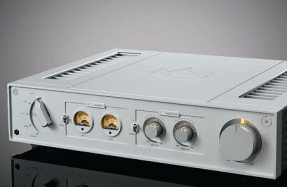
Musical Fidelity’s new M6x ViNYL MM/MC phono stage is game changing for several reasons. It’s one of the first phono stages ever to feature balanced inputs; it’s one of the few that offer multiple phono inputs – three to be precise; and it’s one of the very, very few with multiple inputs that not only allows you to have different loadings for each of them, but also applies those loadings automatically whenever that specific input is selected.
DESIGN AND BUILD
Like many of Musical Fidelity’s products these days, the M6x ViNYL is built entirely in countries within the European Union, a switch in locale that commenced following a change in ownership from the original founder, Anthony Michaelson, to the new owner, Heinz Lichtenegger.
Michaelson, who lives in the UK, had moved most of his manufacturing to Taiwan. Lichtenegger, who lives in Austria and owns multiple high-tech manufacturing facilities in various European countries that he uses to build components for the Pro-Ject and European Audio Team brands, moved production back into the EU.
The M6x ViNYL is unusual for a phono stage because it does not use op-amps (operational amplifiers) in the signal path, but instead discrete components (individual resistors, capacitors, transistors, etc ). This transition to using discrete components is rather the opposite of what’s happening in hi-fi components from most other brands, who use integrated circuits and op-amps in their phono stages, so I asked Musical Fidelity the reason. The answer, according to Lichtenegger, was: “Countless hours of listening tests have shown us that even the very best op-amps do not tend to be so neutral, natural, dynamic or vivid – all of which are characteristics of the Musical Fidelity sound.”
Perhaps unsurprisinfgly, then, Musical Fidelity is not the first company to eliminate op-amps from its circuits. Marantz famously uses op-amp replacements it calls HDAMs, and here in Australia, local boutique high-end hi-fi manufacturer Burson Audio builds what it calls ‘Supreme Sound’ op-amp replacements that it sells to other brands as well as to DIY upgraders.
Burson Audio’s Supreme Sound ‘op-amps’ are comprised entirely of discrete devices. Each one is about 40 times the size of its IC equivalent and comprises 24 matched FETS (Field Effect Transistors), 16 metal film 0.5% tolerance resistors, and pairs of






